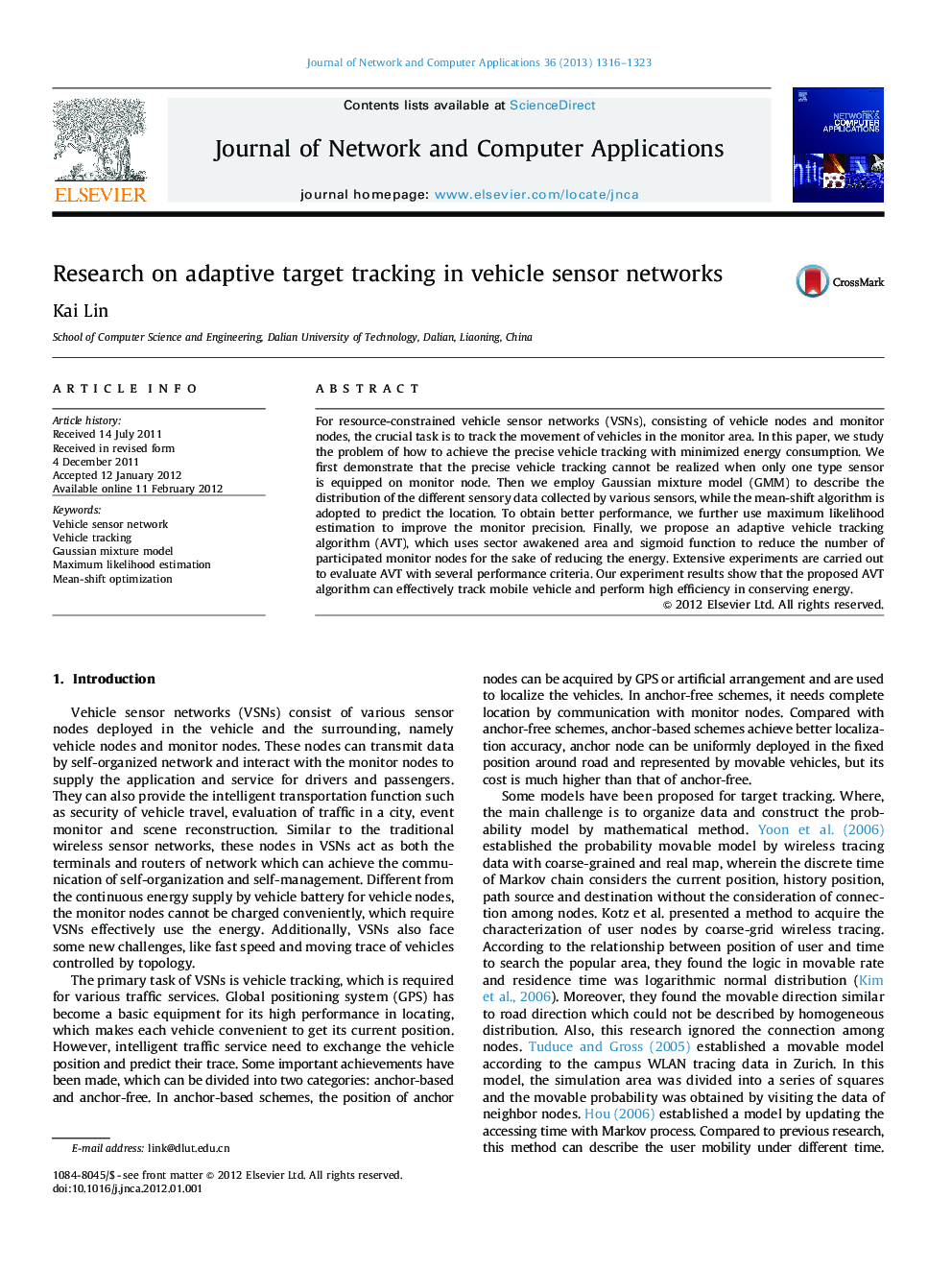| کد مقاله | کد نشریه | سال انتشار | مقاله انگلیسی | نسخه تمام متن |
|---|---|---|---|---|
| 459339 | 696242 | 2013 | 8 صفحه PDF | دانلود رایگان |

For resource-constrained vehicle sensor networks (VSNs), consisting of vehicle nodes and monitor nodes, the crucial task is to track the movement of vehicles in the monitor area. In this paper, we study the problem of how to achieve the precise vehicle tracking with minimized energy consumption. We first demonstrate that the precise vehicle tracking cannot be realized when only one type sensor is equipped on monitor node. Then we employ Gaussian mixture model (GMM) to describe the distribution of the different sensory data collected by various sensors, while the mean-shift algorithm is adopted to predict the location. To obtain better performance, we further use maximum likelihood estimation to improve the monitor precision. Finally, we propose an adaptive vehicle tracking algorithm (AVT), which uses sector awakened area and sigmoid function to reduce the number of participated monitor nodes for the sake of reducing the energy. Extensive experiments are carried out to evaluate AVT with several performance criteria. Our experiment results show that the proposed AVT algorithm can effectively track mobile vehicle and perform high efficiency in conserving energy.
Journal: Journal of Network and Computer Applications - Volume 36, Issue 5, September 2013, Pages 1316–1323